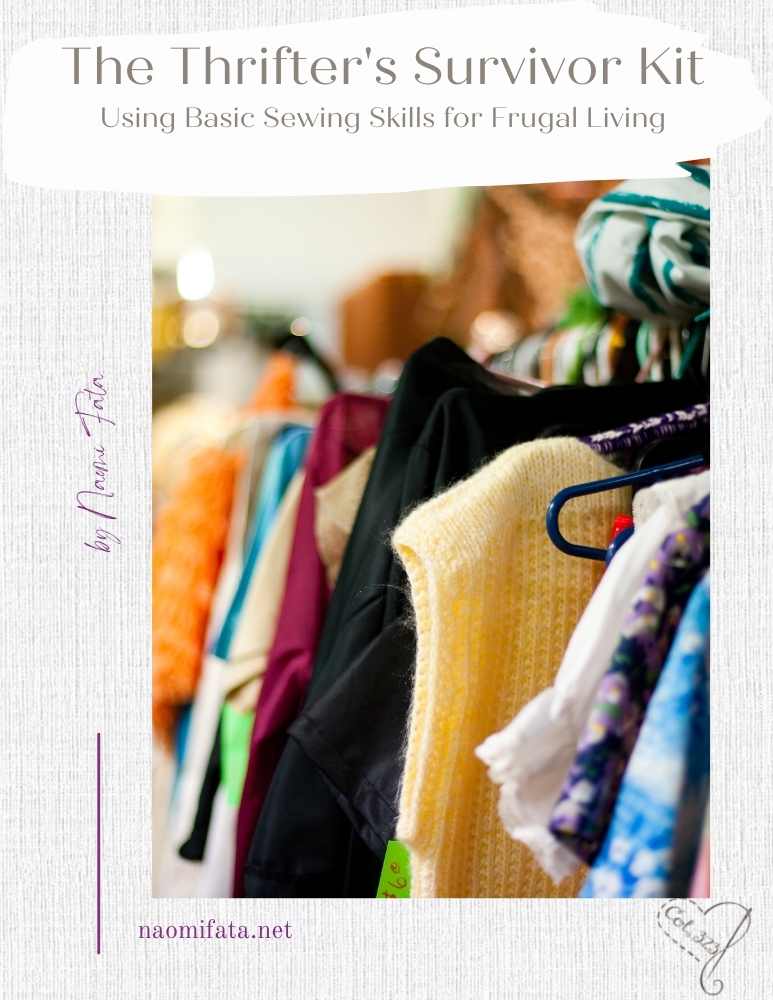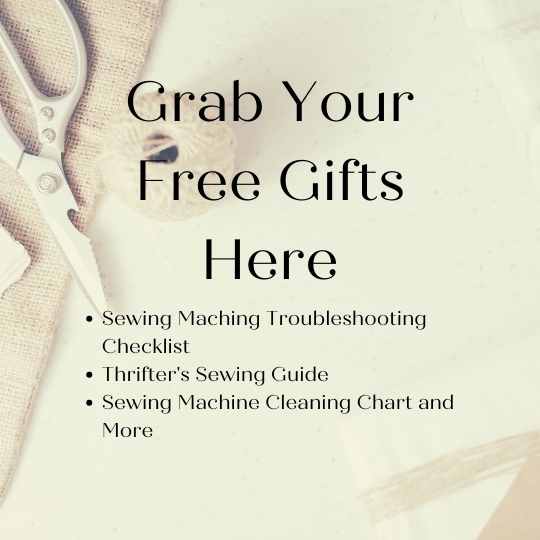This post may contain affiliate links so I earn a commission. Please read my disclosure for more info.
As someone who sews every day, altering ready-made clothes is an creative use for my sewing skills. Thrifting is a great way to get into the amazing world of sustainable fashion, but sometimes, I find lovely pieces that just don’t fit me the way I’d like them to. Instead of leaving an amazing piece for someone else to find, I always take it as an opportunity to create something unique to my size and style.

Buying fabric to make new clothes can be just as expensive as buying clothing already made, if not more so. I have had people comment to me, that they just don’t find their size or their style in thrift stores. But that is the beauty of thrifting and sewing. Even if you typically wear petite, you are not limited to the petite section, as the regular size can be easily altered to fit you. Maybe a little bit off the hem, or a tweak at the waist band and you will be ready to go. you do not have the budget for this, you can go thrift shopping with the intention of up-cycling the thrift pieces to trendier and more stylish clothing. While most people think that sewing clothes is reserved for the creative and crafty people, you only need basic sewing skills to transform thrift clothes into perfectly tailored garments. Small and simple alterations like changing a zipper, resizing a dress or shortening a skirt can make a huge difference. There are a few ways to ensure that you have the best thrifting/sewing experience.
Tips to shop thrift for the purpose of altering clothes

Do you love to thrift?
Did you know that thrifting opens up a whole new world of possibilities when you consider you thrifted options with sewing in mind? This download is filled will ideas about what to look for with some sewing in mind.
- Go shopping with a fixed price in mind. Typically, in my mind I refuse to pay more than $10 for an item at a thrift store unless it is a name brand coat, leather jacket, boots or other article of clothing that would cost upwards of $100 new. Ideally, I look for articles of clothing between the $3-$7 price point.
- Have a list of what you need or want in your wardrobe. Sometimes I go into a thrift store knowing I would like more colored sleeveless shirts in my closet. I start looking through the colored shirts in my size. A colored shirt may catch my attention that has sleeves on it. I contemplate it to determine how easy it would be to transform into a sleeveless shirt (which is a quick alteration).
- Do not pass on outdated pieces or ill-fitting clothes. Although they may seem to be a downgrade from your current style, you can transform any thrift piece into a piece that you will love with basic sewing skills and some creativity.
- Pick items that appeal to your unique sense of style whether it be the fabric or the design. Although current trends dictate what goes into most people’s wardrobes, there is no shame in embracing your unique sense of style. Pick out anything that appeals to you even if it doesn’t fit or it has an unusual print or pattern. You’d be surprised at the masterpiece you create.
- Don’t stick to the clothes sections only. You can find beautiful fabric in the sheets section. Sheets, linens, or other bedding can be made into simple clothing. Also, if I find flat sheets for an exceptionally good price, I use them as templates for slipcovers instead of muslin. Exploring every section of the thrift store is the best bet at finding deals that you may have otherwise passed by.
- Go shopping with an open mind. If you love a piece of clothing or a yardage of fabric, imagine what you could make with it if it isn’t your size. Before you go shopping, ensure that you have an idea what you would lke for your wardrobe. You can get inspiration from Pinterest or from fellow creators. This will broaden your mindset about thrifting projects and what is possible. Or grab New Dress a Day on amazon.
- Don’t pass up clothing that is damaged. If you find something that you love that has a broken zipper, is missing a button or has a stain, think through the possibilities before leaving it on the rack. Could you cover the stain with some visible mending? Buttons and zippers are easily fixable.
- Be realistic. Try not to buy more than you have time to fix or buy clothes that you don’t need. Taking home a bag that will sit in a pile, collecting clutter in your home will just cause extra stress.
Ideas for Altering Clothes that you might thrift
- Don’t like pants with cuffs – take the elastic out.
- The neckline is too high. Lower it to your specific preference.
- Narrow the width of a pant leg.
- The waist is a little large. This can be fixed with darts or by taking in the back seam.
Sewing is easily accessible to anyone who is interested in fashion. When thrift shopping, it is important to shop with an open mind and look at the potential of some of the pieces that most people may consider to be dated or ugly. when you have mastered the art of shopping thrift with the purpose of altering the clothes, then every piece you buy becomes an exciting challenge. Although this is a frugal way of remaining stylish and fashionable, it is also a great way of ensuring that you play a part in maintaining sustainable fashion instead of continually throwing money towards fast fashion.






